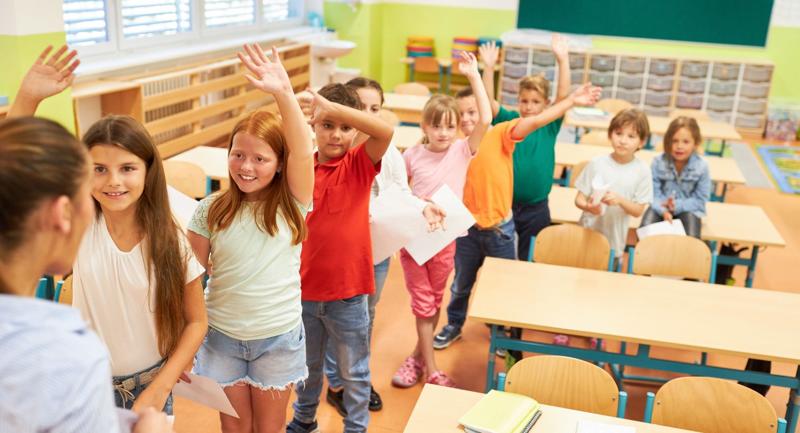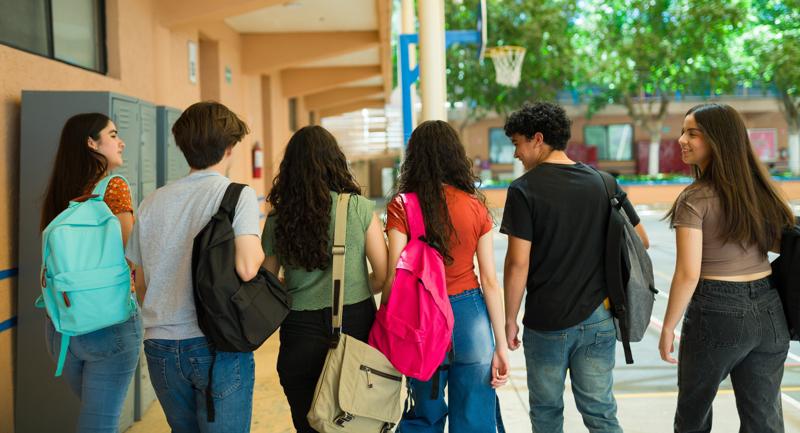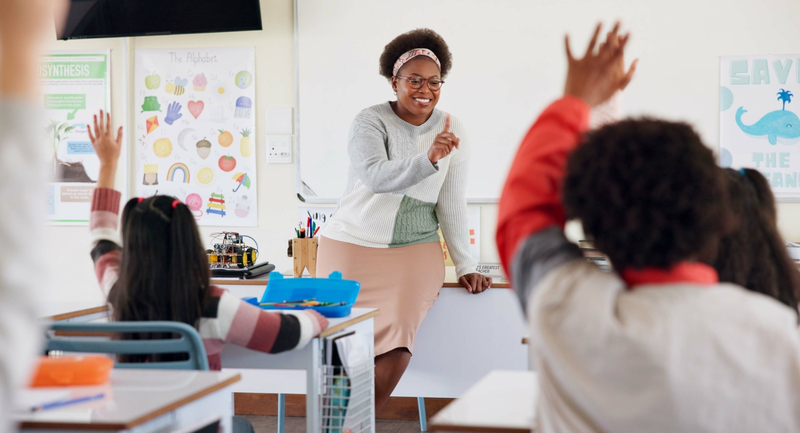Though “fall” for many educators technically started in August, the season’s hallmark foliage, pumpkins, and cooler temperatures—at least in some parts of the country—have caught up with the school year. It’s also the second autumn of the pandemic, and as teachers and school leaders grapple with keeping young students safe now that most are back on campus, they’re paying a lot more attention to nature. Outdoor learning, a longtime strategy to keep kids engaged, has emerged over the past year as a COVID-related precaution with some pretty big benefits.
Online, it’s not hard to find evidence of learning—from math in Pennsylvania to language arts in Nebraska to band rehearsal in Michigan—happening outside. According to the Center for Disease Control and Prevention, COVID transmission is much less likely in open air, making any kind of outdoor school time significantly safer, especially for children too young to receive the vaccine. And at least some of the federal COVID relief funds schools have received over the past year can be devoted to outdoor learning initiatives. Maybe unsurprisingly then, interest in outdoor learning and its various applications have skyrocketed this year, as Education Week reported last month.
Leading students out of the classroom and into the meadows, woods, or community gardens nearby, can also boost learning in ways that are entirely unrelated to the ongoing health crisis. As journalist Madeline Bodin wrote for ASCD in 2018, the practice allows students to connect with the curriculum in new ways and fuels their motivation.
“The [outdoor] setting fosters hands-on, experiential learning and results in more student-driven lessons and nimbler teaching skills . . . . Students are more enthusiastic about what they learn, and that enthusiasm stays with them when they return to the classroom,” she writes.
As Bodin points out, researchers in Norway and Germany found that students who had an outdoor lesson once a week had lower stress levels than students who only learned inside. Swedish researchers have also found that high school students who had outdoor lessons in math and science interacted more with their peers and retained the material better months later.
Writing for the September 2021 issue of Educational Leadership, learning scientist Justin Reich also noted that outdoor learning could be one example of several pedagogies that are robust to interruption—and therefore may become increasingly essential in an unpredictable future.
Making it Work, Despite the Challenges
That said, there are perennial barriers to instituting educational programming outside. For one, not all school districts have access to swaths of untouched nature. Teachers in urban districts, for example, might have to be more strategic about where and how they engage with the outdoors. One principal at an elementary school in Los Angeles told Bodin that his colleagues converted a strip of concrete at the edge of the parking lot into a native plant garden.
"This school is five blocks from the skyscrapers of downtown Los Angeles," he told Bodin. "It can be done anywhere."
The outdoor learning advocacy organization, Green Schoolyard America, has unveiled a National Outdoor Learning Library offering tools for school leaders to develop similar, inclusive spaces for students—especially in big cities. And some districts this fall, including New York City, have also encouraged schools to take advantage of nearby parks and streets as they search for more outdoor learning opportunities.
Colder weather presents challenges as well. Teachers in northern climates can’t always be sure that every student will have warm clothing to keep them comfortable for longer than a few minutes outside. Last year, some districts took to clothing drives to help protect kids while learning outdoors. Similar efforts are happening again this year.
Educators can also face hesitancy or even pushback from administrations who are nervous about letting kids out of classrooms. To win over skeptical colleagues, it can be helpful to start small, with short trips outside. As education researchers Brian Goodwin and Tracie Corner wrote for Educational Leadership last fall, some schools have had success implementing outdoor learning programs that last a limited number of hours a week. They also stressed the importance of working in moments of unstructured exploration. If teachers try to control every moment young students spend in nature, kids won’t be nearly as engaged and the program could falter or fail, they say.
“In many ways, outdoor schools are simply doing what we've long known is good for kids: getting them outside and letting them follow their curiosity,” Goodwin and Corner write.
Fostering that sense of exploration and human connection is especially critical now. COVID precautions for in-person learning, such as social distancing and masking, are effective and necessary safety measures, but sometimes they can make non-verbal communication and forming social bonds between teachers and students more difficult. Having the freedom to take down those barriers, even for just a few minutes a day, can help strengthen relationships in the classroom. As Bodin wrote of one principal she spoke to,
When his classes are outside, he's not the authority figure in the front of the room. He's coaching students who are figuring things out for themselves.
And although vaccine approval for children as young as five appears on the horizon—potentially reshaping how schools approach COVID precautions in the future—the possibilities for outdoor learning as a strategy to reenergize student motivation and boost learning will likely last well beyond this fall, and for many more years to come.








